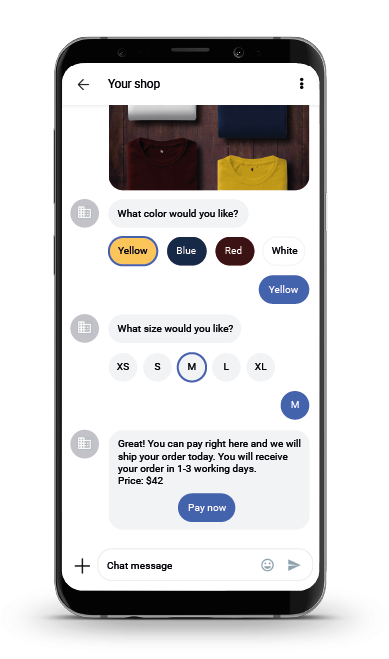Insights, Products
Why every Product Manager should care about mobile CX

Insights, Products

In the post-COVID era, consumers have flocked to digital solutions to solve the challenges of social distancing. But why is mobile customer experience such a critical focus for product managers? It’s because brands can create highly personalized, valuable interactions on mobile, and do so at scale. Each customer’s experience can look and feel unique by leveraging powerful tools like chatbots, artificial intelligence, and rich-media interactions.
Below find out how companies future-proof their brands by investing in the latest applications for mobile CX.
So many micro-interactions with customers now happen on mobile — whether it’s a notification about an upcoming health appointment, a reminder about items left in an online shopping cart, an alert from a bank about an unusual transaction, or a personalized message about a coupon or discount. Mobile messaging is the way you reach your customers wherever they are, at the moment they need your help.
Yet because the mobile channel is so highly personal (it’s in your customer’s pocket!), it’s critical to get those interactions right. That means delivering value every time and minimizing unwanted interruptions. Research from Sinch shows the large majority of consumers want to hear from brands on mobile if the interaction is personalized and valuable; it’s up to product managers to understand the best format and channel to deliver those interactions.

One-way notifications and reminders deliver value (think: a notification about a service interruption from your telco), but there’s so much more companies can do to build engagement and loyalty on mobile using two-way conversations and richer engagement. Now that people have access to faster, more reliable mobile connections, 2-way enterprise messaging is becoming richer and more dynamic. And investing in these new types of interactions is an important way to experiment with new channels and stay out in front of the competition.
What do two-way, rich-media conversations look like? Consider these examples:
These types of two-way interactions save your customers’ time and effort, and they increase conversions and customer loyalty. Win-win.
Automated conversations have come a long way in just a few years, and your customers welcome the speed and efficiency of these interactions. Research from Sinch shows people appreciate chatbots because they’re always on, they offer privacy/anonymity, and the speed of a chatbot conversation can’t measure up to waiting for a human (even if speedy) to pick up the phone. And for enterprise brands, these solutions offer an unparalleled way to deliver great experiences at scale.

How do you leverage chatbots for your product portfolio? Let your customers use mobile chat to ask questions about a product, and if ready, they can buy the product from inside the conversation stream (see photo). Sinch’s research shows 8 in 10 Millennials and Gen Z shoppers think this type of experience is useful, and serving younger customers is an important future-proofing tactic.
And consider this: using the mobile messaging channel isn’t just about delivering great customer service; it’s also about growing your business. More and more, messaging will become another channel for your customers to browse and buy. And companies that can seamlessly connect customer service and sales through the messaging stream will ensure they’re not lagging the competition.
Finally: automated messaging isn’t only for customers. Consider an HR chatbot that can answer your employees’ routine questions about benefits. Or a government chatbot that can direct citizens to important health resources, such as vaccines and testing. So many interactions can be delivered effectively via automated messaging and done so at scale.
Mobile customer experience is no longer nice to have; it’s mission-critical in the COVID-19 era. With so many customer relationships now happening at a distance, mobile is a low-friction way to replace in-person interactions with digital experiences. In retail, new services like curbside pickup have become the norm, and many think these new experiences will continue to be in demand post-COVID.
And other new ways of interacting with customers via mobile are emerging due to safety concerns, such as letting customers check store inventory via a messaging app to minimize time in-store, or paying for products using a mobile phone rather than handling cash.

Retail isn’t the only industry where distanced interactions are moving to mobile. Companies requiring health checks for customers and/or employees use mobile CX to streamline the process and eliminate frustrating queues. (For example, an event where people need pre-screening before entering, a company that requires employees to report symptoms before entering the workplace, or a travel company that must comply with inter-border regulations.)
Also consider video chat interactions — whether checking in with a health provider about new symptoms, getting visual guidance from customer service about a tech question, or learning what repairs were performed on your car from your auto mechanic. In these days of relationships at a distance, the phone is truly the multi-tool for customer experience.
Want to learn more about how mobile CX is transforming customer experience and helping businesses grow? Take a look at our series of reports: Customer experience in a transformed world.